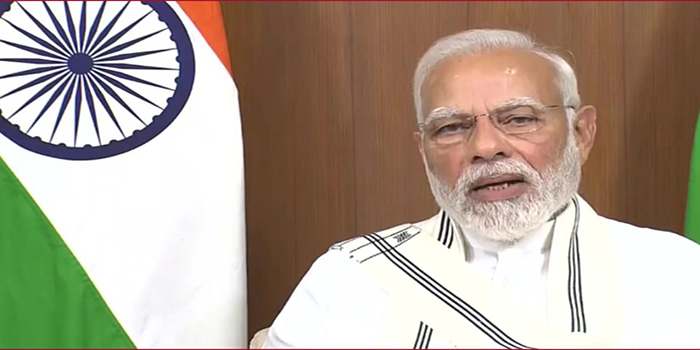JK NEWS TODAY COMMENTARY

There is a lot of excitement and reflection on what all was achieved during the past nine years with Narendra Modi as Prime Minister. Perhaps no other state in the country witnessed as monumental changes as Jammu and Kashmir. This is a fact of life, and today’s the time when the Himalayan territory is on express highway to attain its long-cherished goals of peace and prosperity.
The immediate scene that comes to mind is Home Minister Amit Shah speaking in the Parliament on August 5 and 6, 2019, declaring Article 370 of the Indian constitution as null and void, ending the special status of the state. He claimed that this “temporary” provision had outlived its life, and its time for it to go. There was a litany of promises, but not before the government announced bifurcation of the state into two union territories, Ladakh and J&K.
Ladakh had been asking for this status for long, and J&K was promised restoration of the statehood once the things were back to normal. This was a historic moment for the state, now divided into the two union territories. It was not an easy decision, there were so many risks involved.
All the fears that scrapping of Article 370 would lead to bloodshed and international outrage were handled with care. These were not the unfounded fears as there was an anti-India atmosphere in the Valley and some other parts of the state, generated over the years, by covert and overt investment of Pakistan in the secessionist industry. The secessionism was working on multiple levels ( a) the historical background of the conflict in which Kashmir was viewed since 1947 following Pakistan sponsored tribal invasion of the princely state under Maharaja Hari Singh, last Dogra king , had become part of home schooling ,( b) that after the invasion, Pakistan continued to control the illegally occupied territories gave credence to the idea of “disputed territory,” which was reinforced further by the United Nations Security Council resolutions which outlined the idea of plebiscite for the people of the whole of the state ( that is the Indian and Pakistani parts of the territory) to enable the people choose the country they wanted to live in, ( c) more than 30-year-ol terror violence on Kashmiri soil brought out the extremes to which anti-India forces could go to damage the country and challenge its sovereignty in Kashmir . The abolition of the Article 370 against this backdrop was much more than just catching bull by horns.
The question, however, is whether Modi’s vision about Jammu and Kashmir started on May 26, 2014 when he assumed the office of Prime Minister for the first time after grand victory of his party in the general elections. The abrogation of Article 370 has been BJP’s agenda for decades. Modi. at a rally in Jammu in December 2013 when he was Chief Minister of Gujarat, had called for a debate on the merits and demerits of the constitutional provision. He threw ball in the court of the people, for he knew that without taking the people on board, taking such a decision would be very hard. So, it cannot be said that he took the people of Jammu and Kashmir unawares.
That is about Article 370, abrogation of which redefined the political, and geographical lines in Jammu and Kashmir. The move of August 5, 2019, has also delivered geopolitical benefits: calmed elements in the international community, which were always keen
to pick up Kashmir issue in their narrative in which Kashmir was seen as India’s Achilles’’ heel.
The internal disturbances in the Valley – shutdowns, series of stone-throwing incidents on a daily basis, shootouts, bomb explosions, and the funeral processions of militants killed in encounters, substantiated the alarming situation narrative. Worse was erosion in the image of security forces as the lumpen elements would heckle, harass them in full public view. And the state apparatus had become dysfunctional. It failed to take action against terrorism and the ecosystem. The system was afraid of taking action against terror network because it always felt that that could trigger unpalatable political consequences. The politics had got embedded in the ecosystem, and it was always in lookout for escape routes. Escapism was a safety valve for them, and a way of buying peace.
It had also raised questions about the will of the central government, especially when it was headed by a strong-willed Prime Minister Modi-, to take on terrorism and all the infrastructure that supported it to the hilt.
The Modi government factored in the basis of the support for terrorism in Jammu and Kashmir. It was discovered that three factors were playing out– one, the fear of the gun which coerced the people to fall in line, and among these sections were the men and women who sought their safety by funding the terror. second, there was an ideological alignment in which the militants were seen as the ones who had put up resistance to Indian rule in Kashmir, the third were the beneficiaries of the troubles, because it accorded them greater privileges than others. An unequal society had come to stay.
The Modi government, which had faced enough taunts on its means to handle terrorism, demonstrated its will in September 2016 when it launched a surgical strike against the terrorists and their terror camps across the Line of Control in Pakistan occupied Kashmir, and when that also did not have expected results – Pakistan continued to send infiltrators armed with weapons and other equipment of destruction. simultaneously street protests and stone throwing intensified. The street protests and the clashes pose a serious challenge in anywhere. This is not encounter situation in which the use of bullets is a genuine action to kill the terrorists. Even though the stones also kill, but the use of bullets against such stone throwers alerts the human rights activists, for they draw their own distinction between terrorists with guns, and the protestors with stones. Stone-throwing was given colour of popular resistance, this not only complicated the situation but also took challenges to the levels which were considered insurmountable.
Amidst this atmosphere, where the streets and homes echoed anti-India sentiments, militants with extra lethal intentions were born, and also served as a motivation to do better than their compatriots to establish their credentials. The atmospherics seize minds. this was evident when Adil Dar became a militant and suicide bomber. Dar was recruited by dreaded terror group Jaish-e-Mohammad, and on February 14, 2019, rammed explosive – laden vehicle against CRPF convoy, killing 40 of the personnel. India retaliated with aerial strike within Pakistan, thus laying down a new ground rule that acts of terror would be punished not only within the Valley but also across the border, no matter what it takes to do so.
The time has come when Kashmir was seen by the international community when it descended in Srinagar to attend the G 20 meeting, something that could not have even b imagined few years ago. Modi has made Kashmir a land of possibilities and opportunities from the days when every positive thing seemed to be impossible.




